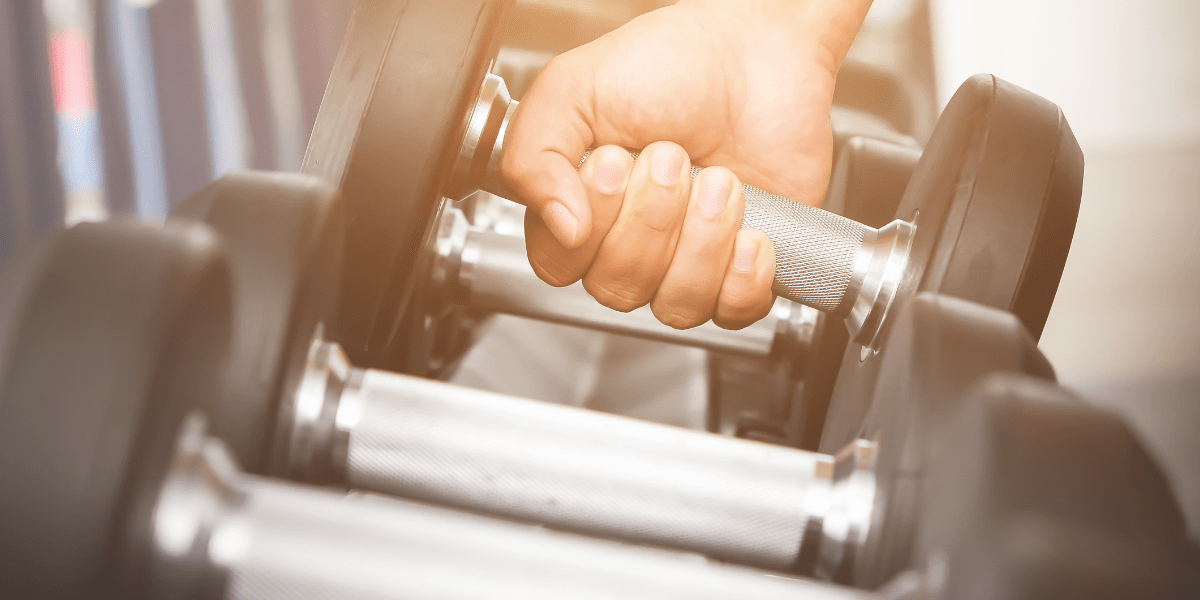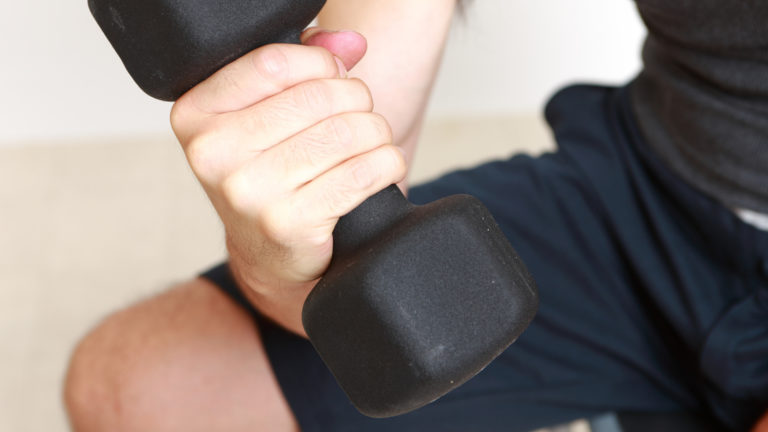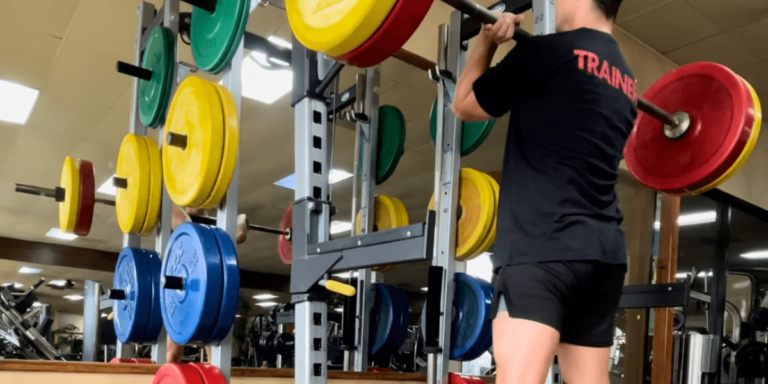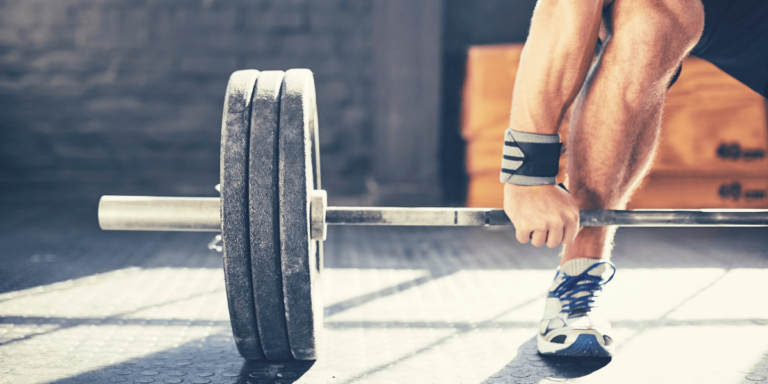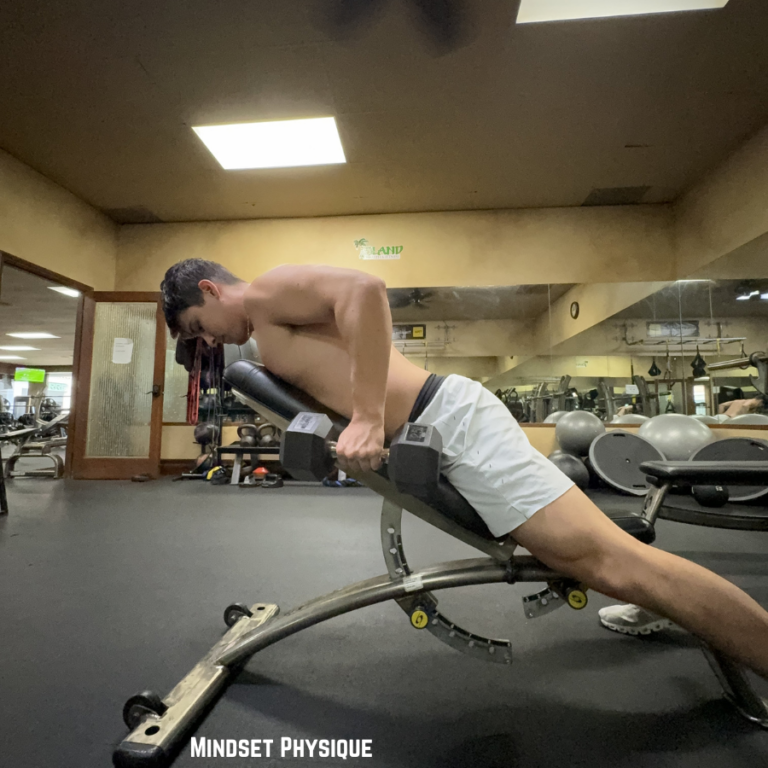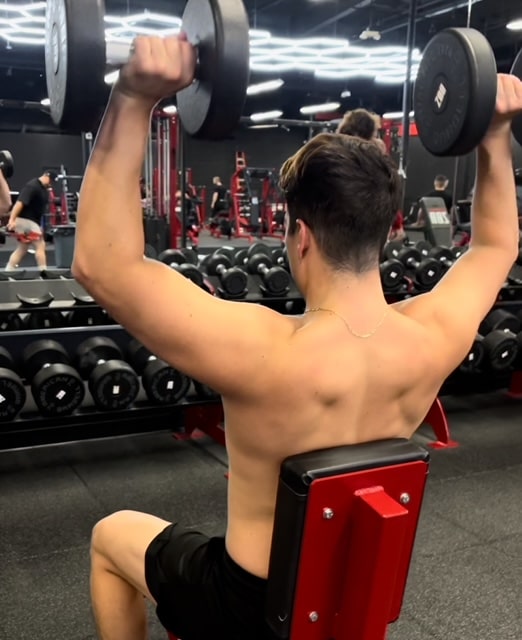5 Rear Delt Dumbbell Exercises To Sculpt Your Shoulders
There’s a lot of talk about push day and back day, and it’s pretty evident that overhead presses, lateral raises, and frontal raises work your shoulders, but did you know that these specific exercises don’t work the posterior end of the shoulder?
Overhead Presses = Target the anterior and medial deltoid
Frontal Raises = Isolates the anterior deltoid
Lateral Raises = Isolates the medial deltoid
The rear deltoid is often neglected. Plus, having well-developed rear deltoids can give you that desirable 3D look in your shoulders.
So, if you want to sculpt those shoulders completely, then it’s time to add some rear delt exercises into your routine. In this article, we’ll look at the different exercises for the rear deltoids, including dumbbells, cables, barbells, kettlebells, bands, and even bodyweight!
Reasons You Should Include Rear Delt Dumbbell Exercises in Your Strength Training Program
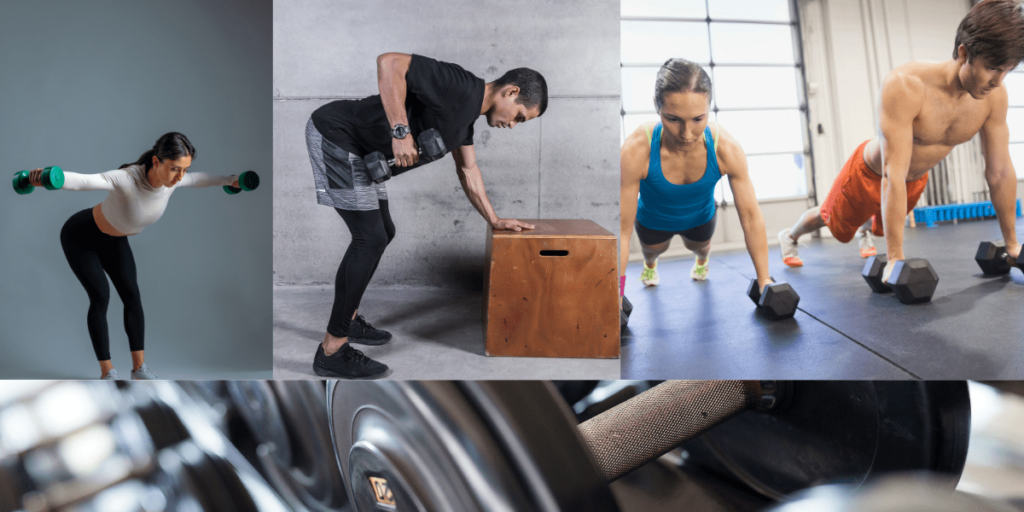
If you want to build and strengthen your shoulder blades, then it’s important to incorporate some rear delt dumbbell exercises into your strength training workout regimen.
These exercises specifically target the rear deltoid muscles, the back end of your shoulder.
Including these exercises also plays a crucial role in maintaining good posture and shoulder alignment.
Not only can strengthening these muscles help you avoid imbalances and injuries, but it can also give your shoulders a more defined and shield-like look.
Below, we’ll cover the best rear delt dumbbell exercises and their progressions, regressions, variations, and which part of the upper arm you’re working.
Anatomy of the Deltoid Shoulder Muscle
The Deltoid Shoulder Muscle is made up of three different heads:
- Anterior (front)
- Medial (middle)
- Posterior (rear)
Each head has its unique function in shoulder movement, stability, and aesthetics. Each head also has its exercises that build that specific head. Today, we’ll cover the rear head.
It’s important to include shoulder exercises that target all three heads in your workout plan to build that overall shoulder blade.
Let’s cover the shoulder muscles that involve the deltoid.
Anterior Deltoid Shoulder Muscle
The Anterior Deltoid Shoulder Muscle is the front head responsible for shoulder flexion.
The front deltoid shoulder muscle will be targeted in vertical push movement exercises, such as military presses, pike push-ups, overhead presses, and Arnold presses.
They also work as a synergist (secondary) muscle in horizontal push exercises. Exercises include incline, decline, flat bench presses, and push-ups.
Medial Deltoid Shoulder Muscle
The Medial Deltoid Shoulder Muscle is the middle head and helps with lateral shoulder raising, also known as abduction.
This muscle works in any vertical push movement. So once again, the medial deltoid works during shoulder exercises like military, pike push-ups, overhead presses, and Arnold presses.
Posterior Deltoid Shoulder Muscle
The rear deltoid pulls your arm back and stabilizes the shoulder during this movement. It also helps with the external rotation of the shoulder joint.
Exercises such as bent-over rows, reverse flies, and single-arm rows can be incorporated into your workout routine to target the posterior deltoids. Because you’re working a minor shoulder muscle, your overall weight is lighter than your bench presses, deadlifts, or squats.
Focusing on proper form and using lighter weights when targeting this muscle group is essential to avoid injury. You still want to focus on progressive overload on these shoulder exercises, and we’ll cover more of that below.
Compound Movement Patterns Before Isolations
There is no “this rear delt exercise over that rear delt exercise.” Almost all of them are important to include in your strength training program at one point or another.
However, compound movement patterns such as overhead presses and rows should take priority over isolation exercises like reverse flies or face pulls.
Compound movements use more muscles and allow for heavier weights, leading to greater muscle stimulation.
Once you have built a solid foundation of strength in your compound lifts, you can add in isolations like rear delt flies.
Don’t worry! We’ll cover compound and isolation exercises for the rear delts below that you can include in your program, but first, it’s essential to know which deltoid muscles are being worked based on movement patterns.
Vertical Push:
Agonist (main muscles working): Anterior & Medial Deltoids
Synergist (secondary muscles working): Triceps Brachii, Upper & Lower Trapezius (Traps), Serratus Anterior
Horizontal Pull:
Agonist (main muscles working): Posterior Deltoids, Latissimus Dorsi (Lats)
Synergist (secondary muscles working): Biceps Brachii, Middle Trapezius (Traps), Rhomboid Major & Minor
Rear Deltoid Exercises
Dumbbells:
Below are the most effective rear delt exercises with dumbbells that target the posterior deltoid should muscle.
On a 3-day full body split (for example), Including at least two horizontal pull exercises each week is essential. (3 if you have specific goals involving the shoulder and overall back).
These can be rotated in and out of your program every 3-4 weeks to ensure continued progress and prevent boredom or plateaus.
Dumbbell Bentover Row
Keynotes:
- Stand with your feet shoulder-width apart (shoulder-width stance), holding a dumbbell in each hand.
- Hinge at the hips and knees slightly bent to bring your torso parallel to the floor while keeping your back straight.
- With palms facing down, pull the weights up towards your waist, squeezing your shoulder blades together.
- Slowly lower the weights back to the starting position (at knee level).
Dumbbell Single Arm Row
Keynotes:
- Start in a split stance with your right leg forward and left leg supported on the bench, holding a dumbbell on the working hand [right hand].
- After completing said reps, repeat this time with your left leg forward and right leg supported on the bench, holding a dumbbell on the working hand [left hand]
- Hinge at the hips, keeping your back straight and shoulders packed down.
- Pull the weight towards your ribcage while keeping your elbow close to your side.
- Slowly lower the weight and switch sides after completing said reps on one side.
Staggard Row
Keynotes:
- Start in a split stance with your right leg forward and left leg supported on the bench, holding a dumbbell on the working hand [right hand].
- After completing said reps, repeat this time with your left leg forward and right leg supported on the bench, holding a dumbbell on the working hand [left hand]
- Hinge at the hips, keeping your head and spine in a straight line and shoulders squared.
- Pull the weights towards your ribcage while keeping your elbows close to your sides.
- Slowly lower the weights back down to the floor
- The most important note is to squeeze your core to stabilize your body since you are in a staggard stance.
Chest Supported Dumbbell Row
Keynotes:
- Position yourself with an upright posture on a chest-supported incline bench with your toes flat on the ground [feet hip-width apart].
- Grasp the dumbbells with a neutral grip (palms facing each other) and keep your back straight.
- Pull the dumbbells towards your ribcage, squeezing your shoulder blades together.
- Slowly lower the handles back down to the starting position.
- To add variation, slow the control down on the eccentric portion (lowering the dumbbells back to the starting position). Take 3-5 seconds coming down.
Dumbbell Bentover Reverse Fly
Keynotes:
- Hold a pair of dumbbells with a neutral grip (palms facing each other).
- Hinge forward at the hips, keeping your back straight, shoulders packed down, and core braced.
- Slowly raise the weights to the side in a controlled motion, making sure not to bend your elbows too much. Only keep a slight bend in the elbows.
- Squeeze your shoulder blades together at the top.
- You’ll typically want to use light dumbbells because you only isolate that posterior deltoid shoulder muscle.
Alternatives to Dumbbells
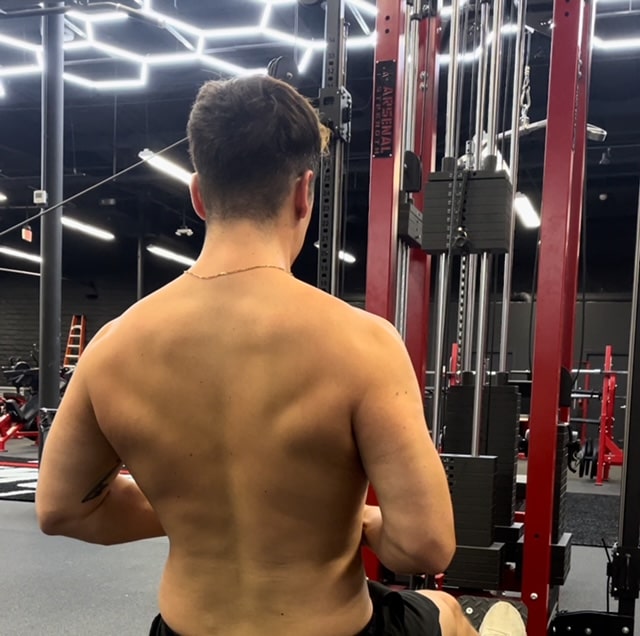
It’s essential to diversify your exercise selection beyond just dumbbell work. Incorporating cable, bodyweight, and barbell exercises can effectively target your rear delts in that upper arm bone region and build muscle in your upper back.
By switching up your rear delt exercises every 3-4 weeks (as mentioned above), you’ll see better results and avoid plateauing when working on the same exercise for an extended period.
Cables:
Cable Low Rows
Key Notes:
- Attach a D-handle to the cable machine.
- Pull your elbows back and squeeze your shoulder blades together as you bring the handle towards your stomach (think about bringing your elbows past 90 degrees).
- Keep your shoulders packed down. Do not shrug.
- Slowly return the handle to the starting position.
- To add variation, slowly lower the handle back to the starting position. Take 3-5 seconds coming down for an eccentric overload.
Single Arm Cable Row [Seated]
Key Notes:
- Sit on a bench or chair in front of the cable machine.
- Attach a D-handle to the cable and sit down facing the cable machine.
- Hold the handle with one hand, extending your arm in front of you.
- Pull your elbow back, squeezing your shoulder blade towards your spine as you bring the handle towards your waist.
- Slowly return the handle to the starting position.
Single Arm Cable Row [Standing]
Key Notes:
- Stand facing the cable machine, feet shoulder-width apart.
- Hold onto the handle with one hand, extending your arm in front of you.
- Pull your elbow back and squeeze your shoulder blade towards your spine as you bring the handle towards your waist.
- Slowly return the handle to the starting position.
Bentover Cable Row
Key Notes:
- Set the cable to the lowest level position.
- Attach a straight bar to the cable machine.
- Stand facing away from the cable machine, feet shoulder-width apart.
- Bend your knees slightly and lean forward from your hips, keeping your back straight.
- Hold onto the bar with an overhand grip and extend your arms toward the floor.
- Pull the bar towards your stomach, keeping your elbows close to your body.
- Slowly return the bar to the starting position.
Side Plank + Single Arm Cable Row
Key Notes:
- Start by getting into a side plank position, with your body in a straight line, your feet stacked on each other, and your bottom elbow stacked in line with your top shoulder.
- Hold the cable handle with your free hand, extending your arm towards the cable machine.
- Pull the handle towards your rib cage, squeezing your shoulder blade towards your spine.
- Slowly return the handle to the starting position.
- Complete all reps on one side before switching to the other side.
Chest Supported Single Arm Cable Row
Key Notes:
- Set an incline bench at a low angle and place yourself facing the cable machine.
- Lay your chest down on the bench with your toes planted for stability.
- Hold the handle with one hand, the other holding the incline bench for support, and extend your arm towards the cable machine.
- Pull your elbow back and squeeze your shoulder blade.
Cable Machine Fly
Key Notes:
- Adjust the cables to a low position and attach D-handles.
- Stand facing away from the cable machine, feet shoulder-width apart.
- Hold onto the handles with an overhand grip and extend your arms to your sides at shoulder height.
- Slowly bring your arms together in front of you, squeezing your chest muscles.
Bodyweight:
Barbell Inverted Rows
Key Notes:
- Adjust a barbell on a Smith machine to about hip height.
- Lay underneath the bar and grab onto it with an overhand grip, arms shoulder-width apart.
- Keep your body straight and your feet planted on the ground.
- Pull yourself up towards the bar, squeezing your shoulder blades together.
- Slowly lower yourself back down to the starting position.
- A good rep range for this bodyweight exercise is 12-15 reps.
Bands:
Banded Rows
Key Notes:
- Attach a resistance band to a sturdy object at about waist height.
- Stand facing away from the anchor point, holding onto the band with both hands and arms extended in front of you.
- Pull your elbows back and squeeze your shoulder blades together, keeping your arms close to your sides.
- Slowly release back to the starting position.
- Working with resistance bands instead of weights, I prefer a rep range of around 20-25 reps or until almost the failure point.
Barbells:
Barbell Bentover Row
Key Notes:
- Stand with your feet shoulder-width apart, knees slightly bent.
- Hold onto a barbell with an overhand grip and keep your arms extended in front of you.
- Slowly hinge at the hips while keeping your back straight, bringing the bar towards your belly button.
- Squeeze your back muscles to pull the weight upwards towards your belly button.
- Keep the barbell close to your quads throughout the movement.
T Bar Row
Key Notes:
- Place one end of a barbell into the corner of a room or landmine attachment.
- Hold onto the other end of the bar with an overhand grip and stand next to it, feet shoulder-width apart.
- Slowly hinge at the hips as you bring the weight towards your belly button, keeping your back straight.
- Squeeze your back muscles to pull the weight upwards towards your stomach.
- Bring the weight back to the starting position, keeping your arms extended.
Pendalay Row
Key Notes:
- Start with a barbell on the ground before you, feet shoulder-width apart and knees slightly bent.
- Hold the barbell with an overhand grip and keep the barbell very close to your shins.
- Hinge at the hips as you lift the weight off the ground, keeping your back straight.
- Pull the weight towards your chest with power; we’re working on explosiveness here.
- Slowly lower the weight back to the ground, and take a moment to reset before repeating the next repetition.
Kettle Bell Exercises
These exercises are very similar to some of the dumbbell versions above. If you only have access to kettlebells, then these are good alternatives.
Kettlebell Single Arm Row
Key Notes:
- Place a kettlebell on the floor between your feet, hip-width apart.
- Hinge at the hips and pick up the kettlebell with one hand, keeping your back straight.
- Pull the weight towards your lower ribs while keeping your elbow close to your body.
- Squeeze your shoulder blade as you lift the weight upwards.
Kettlebell Bentover Alternating Row
Key Notes:
- Start with a kettlebell of the same weight in each hand, feet shoulder-width apart, on the floor.
- Hinge at the hips and bend your knees slightly as you bring the weights towards your chest.
- Alternate pulling one weight towards your chest while keeping the other arm extended.
- Focus on squeezing your back muscles with each repetition.
- Slowly lower the weight back onto the floor before alternating.
Kettlebell Chest Supported Suprinated to Pronated Row
Key Notes:
- Start on an incline bench, chest upright and supported, with your toes on the ground for stability.
- Hold a kettlebell in each hand, palms facing upwards.
- Pull the weights towards your lower ribs while keeping your elbows close to your body.
- As you bring the weights towards your chest, rotate your palms downwards and squeeze your shoulder blades at the top.
- Slowly lower the weights back to the starting position, rotating your palms upwards again.
Key Considerations for Successfully Performing Any Rear Deltoid Exercise
Like any other exercise, maintaining proper form during these exercises is essential for maximizing results and preventing injuries.
Keeping your feet flat on the ground and engaging your core muscles to stabilize your upper body is also essential. Start with lighter weights and gradually increase resistance as your body adapts to the new level of intensity.
Always track your workouts, including your progress on these exercises. Implement progressive overload, which we’ll cover some strategies below, and track your progress over time.
Additionally, controlling your breathing enhances the effectiveness of your workout by increasing oxygen flow to your muscles.
Taking it to the Next Level: How to Progress Rear Delt Development
The most important thing to remember when training any muscle group, including the posterior deltoid muscle, is to implement progressive overload. This means gradually increasing the stress on your muscles over time. Here are some strategies for progressive overload in your rear delt exercises:
- Increase weight/resistance: As mentioned earlier, gradually increase your weight or resistance during exercises.
- Decrease rest time between sets: Shortening your rest periods challenges your muscles to work harder and adapt to a higher level of intensity.
- Increase repetitions: As your muscles adapt to a certain number of repetitions, increase the number of reps you do to continue challenging them.
- Time Under Tension: Working on tempo through the movement of the exercise. The eccentric phase control (coming down / extension) is slowed. Focusing on the eccentric phase can help increase muscle time under tension and lead to more significant muscle growth.
- Range of Motion: When performing exercises to target the posterior shoulder muscle, you want to work on the range of motion. Before increasing the weight, work on improving your range of motion.
You also want to focus on the progressions of the exercise. For example, going from dumbbell bent over rows to barbell bent over rows.
Another example would be adding a variation to the current exercise that makes it more challenging. For example, adding a bird dog row works your core and rear deltoid shoulder muscles. You’d typically go lighter on the weight due to balance but still work both muscles.
Frequently Asked Questions
How do you target the rear delts with dumbbells?
Any of the dumbbell exercises mentioned above are great for targeting the posterior deltoid shoulder muscle. It’s good to incorporate these into your strength training program, switching it up every 3-4 weeks.
What is the best exercise for rear delts?
There is no best exercise. Any exercise focusing on the horizontal pull movement pattern and isolations for the rear shoulder muscle mentioned above will be the best.
Do dumbbell shrugs work the rear delts?
No. Dumbbell shrugs primarily target the trapezius muscle, not the rear deltoids. To work the rear deltoids specifically, I recommend incorporating exercises that involve a horizontal pulling motion, such as dumbbell rows or cable rows (mentioned above). These exercises also engage the rhomboid and middle trapezius muscles, contributing to a solid and functional posterior chain.
Is It Important To Train Rear Delts?
It is essential to train the rear delts as they are a crucial muscle group in maintaining proper posture and shoulder stability.
Incorporating exercises targeting the rear deltoids into your routine will help ensure balanced muscle development and overall strength.
Does Arnold Press Work the rear delts?
Yes, the Arnold press is designed to target all three heads of the deltoid muscle. However, because it’s more of a vertical push movement pattern, you will target more of the anterior and medial head of the deltoid, in addition to the serratus anterior, triceps, and the upper & lower trapezius.
Wrapping Up: Rear Delt Dumbbell Exercises
To Summarize:
Dumbbells:
- Dumbbell Bentover Row
- Dumbbell Single Arm Row
- Staggard Row
- Chest Supported Dumbbell Row
- Dumbbell Bentover Reverse Fly
Cables:
- Cable Low Rows
- Single Arm Cable Row [Seated]
- Single Arm Cable Row [Standing]
- Bentover Cable Row
- Side Plank + Single Arm Cable Row
- Chest Supported Single Arm Cable Row
- Cable Machine Fly
Bodyweight:
- Barbell Inverted Rows (Aussies)
Banded:
- Banded Rows
Barbell:
- Barbell Bentover Row
- T Bar Row
- Pendalay Row
Kettlebell:
- Kettlebell Single Arm Row
- Kettlebell Bentover Alternating Row
- Kettlebell Chest Supported Suprinated to Pronated Row
Incorporating rear delt exercises into your workout routine is crucial for developing your shoulder muscles effectively. It’s good to include a mix of rear delt dumbbell exercises, cable, barbell, bodyweight, and kettlebell at some point in your training journey.
Neglecting your posterior shoulder muscles could lead to muscle imbalances, which can affect your overall shoulder stability.
I have significantly improved my overall shoulder development by prioritizing my posterior deltoid training. Not only are my shoulders more aesthetically pleasing, but it’s also improved my posture from sitting behind a desk half the week writing articles like these.
You want to train each muscle group 2-3x per week, utilizing the exercises that work for you and your current strength training level. That includes all three heads of the deltoid shoulder muscle.
